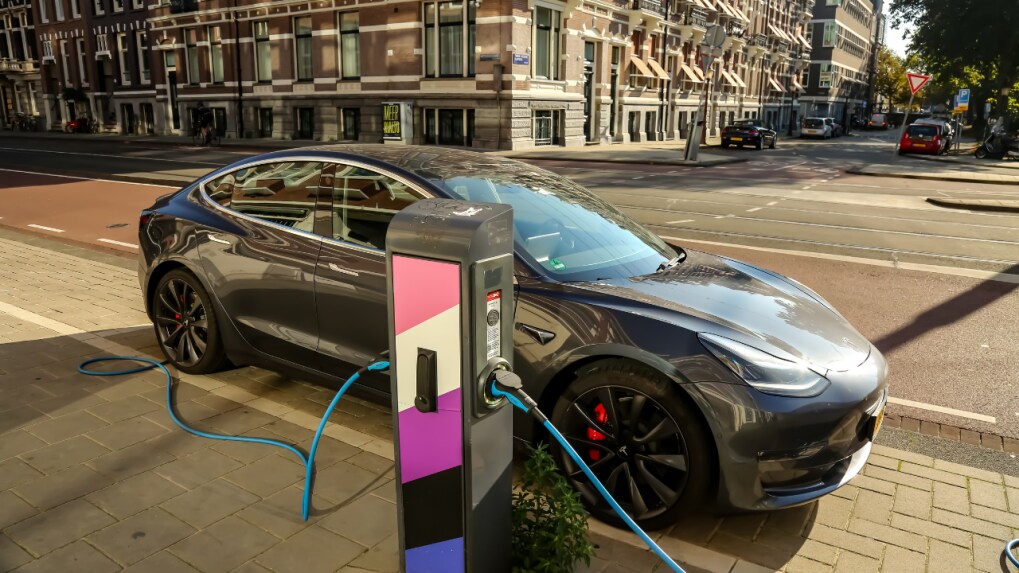EVolve 2022: Can EV charging stations become new outdoor ad platforms?
Seeing ads for products and services while charging your EV at a station is not such a distant reality.
ADVERTISEMENT
Note to readers: The last decade has witnessed significant advances in mobility and transport. New technologies and opportunities have brought a dramatic change to our societies. Planet and people-friendly transportation is more relevant than ever in the history of humankind, with everything from health to climate crises hitting us at warp speed. Storyboard18’s Month In This - EVolve 2022: Building an electric future, is an opportunity to bring to the forefront conversations around charging up marketing and brand building, to exchange and share new ideas, challenges and solutions in the field of clean transportation and mobility. Catch this Storyboard18 special on Moneycontrol, CNBC-TV18 and Forbes India.
As electric mobility continues to gain popularity among sustainability conscious upwardly mobile Indians, advertisers might find a new way to advertise to this new set of customers.
Earlier this year, a report from advertising and marketing focussed news portal reported that a US-based EV charging network Volta Charging, which boasts of 2,137 stalls nationwide, is launching a dedicated media network, Volta Media, to better serve its advertising partners.
The move simply means that brands across categories will now be able to advertise at these EV charging stations to capture the attention of tech savvy and affluent consumers.
On Volta Charging's website the company states: "It's time to rethink your media strategy. Our growing network of charging stations reaches millions of qualified customers with premium place-based, interactive content in a sustainable format."
In India, the same model can potentially be replicated as the EV infrastructure strengthens owing to the strong impetus given to ramp up the EV ecosystem both by the government and private players.
The Centre said it is planning to install up to 70,000 EV chargers across the country in the next few years. Meanwhile, under phase II of the Faster Adoption and Manufacturing of (Hybrid &) Electric Vehicles in India (FAME-India) scheme, the Ministry of Heavy Industries (MHI) has sanctioned 2,877 electric vehicles (EV) charging stations in 68 cities across 25 states. 1,576 charging stations have been sanctioned across 9 expressways and 16 highways.
FAME was launched in 2015 to improve the infrastructure required for the large-scale use of EVs. Phase II, which began in April 2019, is the current phase and will last five years.
Meanwhile, key companies including Mercedes-Benz India, already have 100-odd EV stations across the country where EVs of all brands can be charged easily.
Ideal touchpoint for engagement
Experts believe that EV stations can potentially be an impactful outdoor advertising platform, giving brands access to upwardly mobile, tech savvy and an affluent urban consumer base. This cohort are not only early adopters of technology but are also equally conscious and responsible about the environment.
Rachana Lokhande - Founder, Glocal Bridge and advisor at the Indian Outdoor Advertising Association (IOAA) says that the EV charging stations require higher electricity voltage and the availability of larger spaces to build the stations which can accommodate multiple cars.
“The plans for battery swapping stations and building a dense network of charging points instead of charging stations are emerging to be a better solution. Considering that charging stations might likely be on the outskirts, this dense network of public EV charging points is an ideal touchpoint for developing a good DOOH (digital outdoor) /OOH network,” she adds.
Viability of charging stations advertising
Industry executives seem divided on the potential of charging stations becoming a hot favourite of advertisers when it comes to targeting a specific set of consumers.
Nilay Chandra, VP - marketing and charging infrastructure, Ather Energy, notes that in India, our two-wheeler parking locations are in the corner where there is not enough parking space and outdoor in such an area will not be in the best looking or well lit-up space probably beyond a point I don’t know how many people will be visiting that area to get return on investment (RoI) of that location.
“I believe even in India in some locations this model can work. The need to get operational revenues from advertising is little low in India. Even if 40 percent of our vehicles convert into EVs in the next five years we are talking about 10 million EVs so our volumes are so substantial even without doing outdoor advertising at charging stations there is business viability,” he explains.
Chandra further adds that the charging time is so less at these stations one doesn’t get such a highly captive audience that brands might get at an airport.
“While volume might be high, the engagement will be so slow that conversion rates won’t be high. My belief is that while in some prominent locations this model might work but this will not be the prominent model of how revenue generations at these stations will happen,” he rues.
Meanwhile, luxury automobile maker Mercedes-Benz India, which has over 100 charging stations in the country, says that it intends to keep its stations advertising free.
“In future, there will be charging points for luxury cars (more than 100 kW) and the others will be for the mass brands. We however do not want to intrude customers with advertising messages when one is charging their car, rather focus on offering a quick charging experience,” says Santosh Iyer, vice president of sales and marketing for Mercedes-Benz India.
Lokhande of Global Bridge argues that the potential of outdoor advertising is dependent on exposure to the audience, which is dependent on the time taken to charge a vehicle and the positioning of the public charging points.
Whether the outdoor advertising at EV charging stations picks up big time is something only time will tell, the adoption of electric mobility in India is clearly undebatable.

